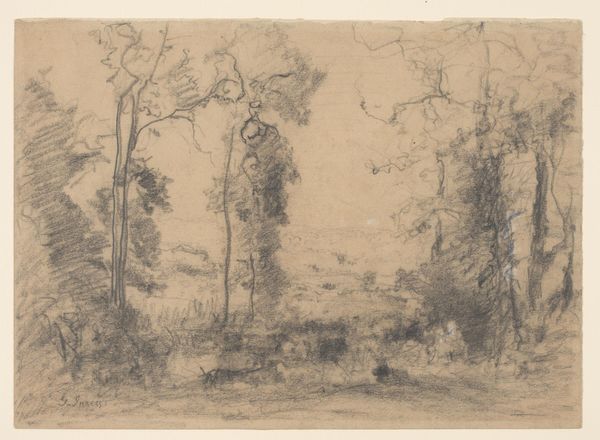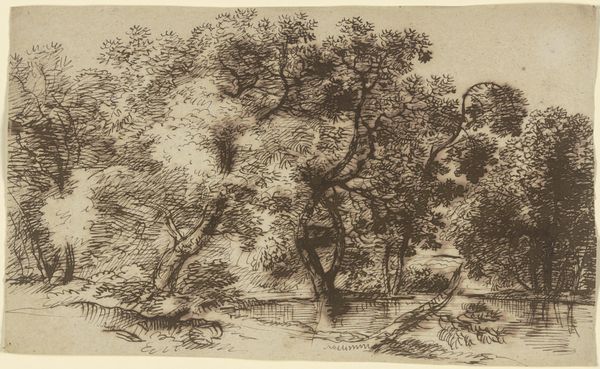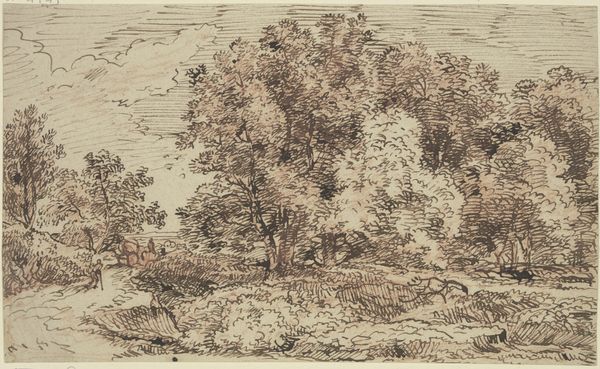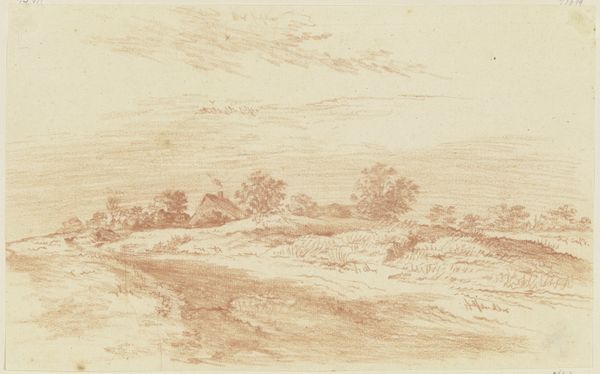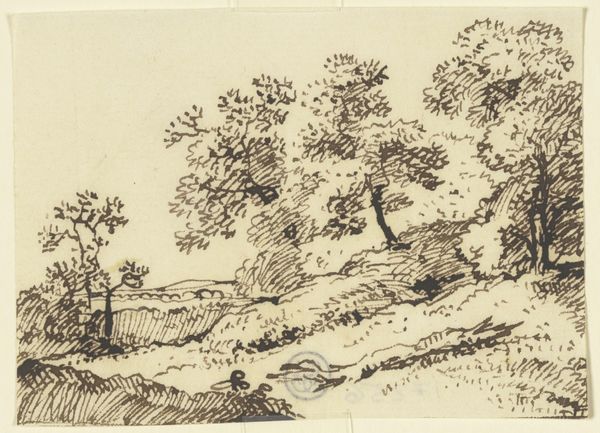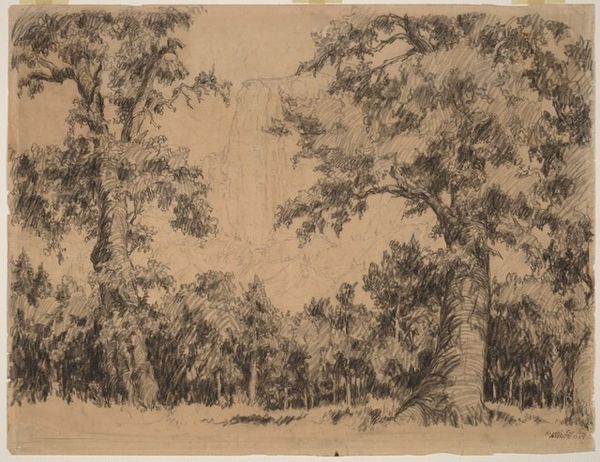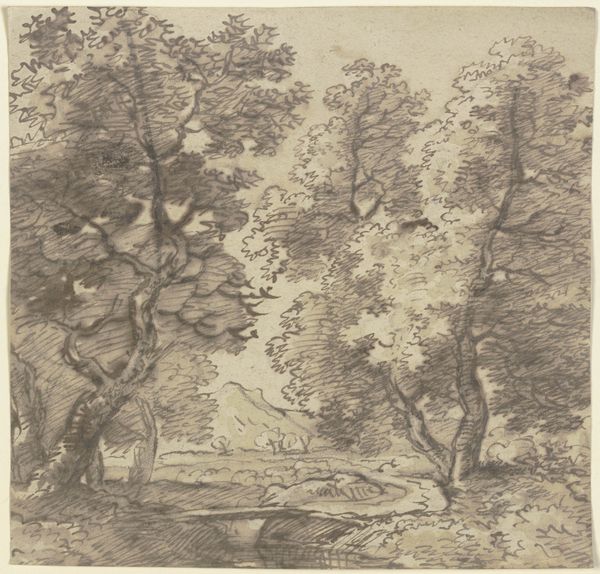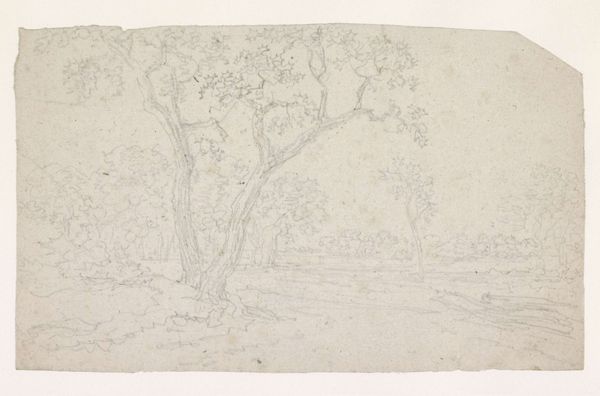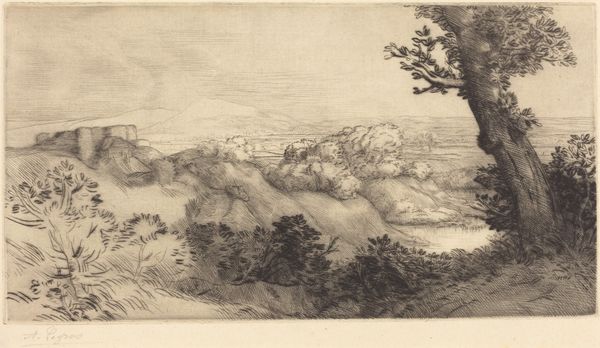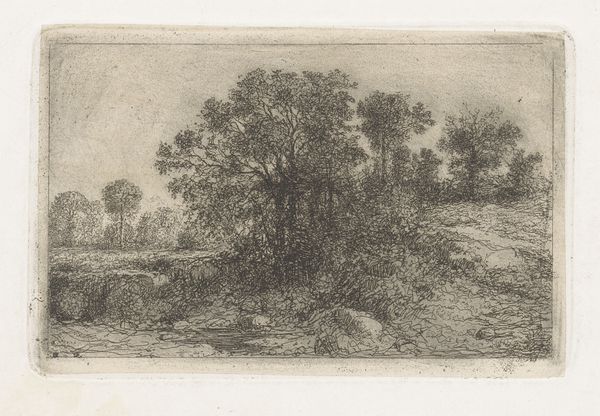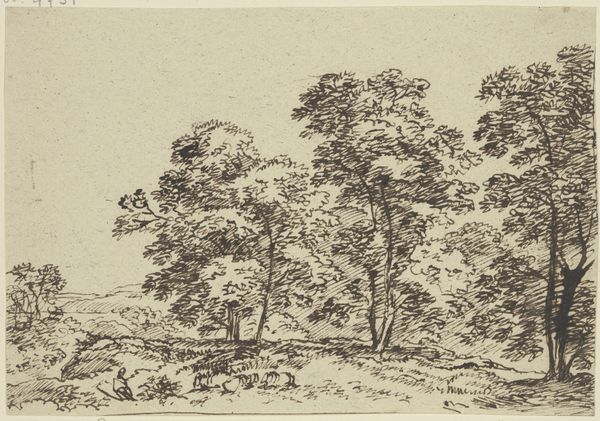
drawing, print, etching
#
drawing
# print
#
impressionism
#
etching
#
landscape
Copyright: Public Domain: Artvee
Curator: This is James Ensor's "The Thunderstorm," created in 1889. It's an etching. Editor: There's an uneasy stillness to it, don't you think? Like everything's holding its breath before the sky breaks. The light is peculiar, very diffuse and unsettling. Curator: Etchings were fairly common amongst Impressionist artists. It allowed for broader distribution, a democratizing force. And landscape, of course, a key subject of that movement and their plein air techniques. Editor: It's interesting to consider Ensor using this method. This isn't some quick sketch done outdoors. This image was labored over. Look at the marks making the sky--they point at directionality, the hand at work. Was this for mass production or artistic statement? Curator: Well, the print medium placed it within the reach of a broader public, moving art outside the elite circles, wouldn’t you agree? Ensor often challenged societal norms, both through subject matter and distribution. It would not have been showcased solely in a salon. Editor: And the houses—those small structures— they look precariously situated on unstable grounds. They're not idyllic, though rendered almost as familiar through the etching process. You feel a tension between the ideal of rural life, reproduced for bourgeois consumption and a far grittier reality made through physical labor. Curator: Ensor also later used lithography. It gave artists greater control over reproduction. So you have an image meant for the masses but under a more controlled scope by the artist. The etching may suggest a sense of freedom. But he seems intent to communicate something on his terms to the middle class. Editor: The sky is just consuming everything. Look closely, the sky may have started as this idyllic Impressionistic cumulus moment, but the density speaks to anxiety. I suppose the piece serves as a potent commentary on the human condition—our precarious existence set against the forces of nature and societal pressure? Curator: Ultimately, that blend is part of what defines Ensor, doesn't it? A figure walking his own path, reflecting society through distorted visions in ways that spoke volumes, especially given the climate of the era. Editor: I'll remember this unsettling atmosphere combined with technical process the next time a storm rolls in.
Comments
No comments
Be the first to comment and join the conversation on the ultimate creative platform.
